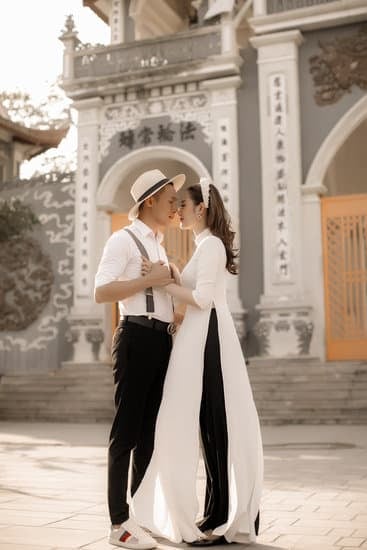Have you ever wondered what a size 10 wedding dress is equivalent to? Understanding wedding dress sizing can be a confusing and daunting task for many brides-to-be. From measuring for the perfect fit to knowing the differences in sizing among designers, finding the right wedding dress size involves careful consideration and attention to detail.
When it comes to wedding dress sizing, a size 10 is equivalent to a medium or a size 6-8 in regular clothing. However, it’s important to keep in mind that sizing can vary widely among different bridal designers and even within their own collections.
Measuring for a wedding dress involves taking accurate measurements of your bust, waist, and hips. This will help you determine your correct size and ensure that your wedding dress fits perfectly. It’s essential to consult with the bridal salon or designer for guidance on how to measure accurately for their specific sizing chart.
Understanding these fundamentals of wedding dress sizing is crucial in finding the perfect fit. In the following sections, we will delve deeper into what a size 10 wedding dress is equivalent to, explore differences in sizing among designers, and provide tips for finding the ideal wedding dress size that complements your body shape.
How to Measure for a Wedding Dress
When it comes to finding the perfect wedding dress, understanding how to measure for the right size is essential. The first step in determining what size wedding dress you need is to take your measurements accurately.
You will need to measure your bust, waist, and hips, as these are the key areas that determine your dress size. It’s important to note that dress sizes are not uniform across all designers, so taking your measurements and comparing them to each designer’s size chart is crucial.
Once you have your measurements, you can then refer to the size charts provided by different designers or bridal shops to determine what size wedding dress you will need. For example, a size 10 wedding dress may be equivalent to a certain range of bust, waist, and hip measurements according to the specific designer’s sizing standards. This highlights the importance of understanding how each designer’s sizing works and how it relates to your own measurements.
In addition to knowing your measurements and understanding how they correspond to different wedding dress sizes, it’s also helpful to consider any specific body shape characteristics you may have. Different body shapes may require certain adjustments or alterations when it comes to choosing the right wedding dress size. This emphasizes the significance of not only knowing your measurements but also being aware of how they align with your unique body shape.
What Is a Size 10 Wedding Dress Equivalent To
When it comes to finding the perfect wedding dress, understanding sizing is crucial. Many brides wonder, “What is a size 10 wedding dress equivalent to?” It’s important to note that wedding dress sizing can vary among different designers and even within their own collections. A size 10 wedding dress is typically equivalent to a size 6 or 8 in regular clothing, but it’s essential to remember that bridal sizing tends to run smaller than everyday clothing sizes.
To measure for a wedding dress, start by taking accurate measurements of your bust, waist, and hips. Wedding dresses are often ordered based on the largest measurement, so it’s important to prioritize the largest part of your body when determining your size. Keep in mind that it’s easier to take in a dress than it is to let one out, so it’s best to go with the larger size if you fall between two sizes.
When shopping for the perfect wedding dress size, don’t get hung up on the number on the tag. Focus on finding a gown that fits your body comfortably and makes you feel beautiful. Remember that alterations are always an option and can be used to achieve the perfect fit for your special day. Ultimately, the most important factor is choosing a dress that makes you feel confident and radiant as you walk down the aisle.
Differences in Wedding Dress Sizing Among Designers
When it comes to wedding dress shopping, one of the most confusing aspects can be the sizing. What exactly is a size 10 wedding dress equivalent to? The answer is not as straightforward as you might think. Wedding dress sizing can vary greatly among different designers, making it essential for brides-to-be to understand these differences before starting the shopping process.
For example, a size 10 wedding dress from one designer may fit similarly to a size 8 or even a size 12 from another designer. This discrepancy is due to the lack of standardization in the wedding dress industry. Each designer has their own set of measurements and size charts, making it crucial for brides to focus on how the dress fits rather than its numerical size.
To further complicate matters, wedding dresses are often structured with built-in corsets, boning, and other supportive elements. These internal features can affect how a dress fits and feels on the body, regardless of the labeled size. That’s why it’s important for brides to try on dresses and work with knowledgeable bridal consultants who can guide them through the sizing nuances of different designers.
In order to navigate these differences in wedding dress sizing among designers, it’s advisable for brides-to-be to keep an open mind and try on various sizes during their shopping experience. Focusing on how the dress looks and feels rather than getting hung up on the number on the tag can help alleviate some of the stress associated with finding the perfect wedding dress size.
| Wedding Dress Sizing | Differences Among Designers |
|---|---|
| Not standardized | Vary greatly between designers |
| Focus on fit over numerical size | Try on various sizes |
Tips for Finding the Perfect Wedding Dress Size
When it comes to finding the perfect wedding dress size, there are a few tips to keep in mind to ensure that your dress fits just right for your special day. Here are some tips for finding the perfect wedding dress size:
1. Understand the sizing: Wedding dress sizes can vary widely among different designers, so it’s important to understand how wedding dress sizing works. A size 10 wedding dress is typically equivalent to a 6 or 8 in regular clothing sizes.
2. Measure carefully: Before shopping for a wedding dress, it’s essential to measure your bust, waist, and hip measurements accurately. This will help you determine which size will fit you best and ensure a well-fitting dress.
3. Try on different sizes: Don’t be discouraged if the first size you try on doesn’t fit perfectly. Be open to trying on different sizes and styles to find the one that flatters your figure the most. Keep in mind that alterations can also be made to customize the fit of the dress.
Remember that finding the perfect wedding dress size is not just about numbers; it’s about finding a dress that makes you feel beautiful and confident on your special day. With these tips in mind, you’ll be well-equipped to find a wedding dress that fits you like a dream.
Common Alterations for Wedding Dresses
When it comes to finding the perfect wedding dress, it’s important to keep in mind that alterations are often necessary to achieve the ideal fit. Whether you’re purchasing a size 10 wedding dress or any other size, most brides will need some adjustments to ensure that the dress fits like a dream on their big day.
Here are some common alterations for wedding dresses:
- Hemming: This is one of the most common alterations for wedding dresses, as many gowns may be too long for the bride’s height. Whether you’re wearing heels or flats, hemming ensures that the length of the dress is just right for you.
- Taking in or letting out the bodice: Depending on your body shape and measurements, you may need to have the bodice of your dress taken in or let out for a more flattering fit.
- Adding or removing sleeves: If you have your heart set on a certain style of sleeves for your wedding dress, but the gown you’ve chosen doesn’t have them, this is a common alteration that can be done by a skilled tailor.
These are just a few examples of the alterations that may be needed to make your wedding dress truly perfect for you. Keep in mind that every body is unique, and what works for one person may not work for another. It’s important to work with a professional seamstress or tailor who can help make these adjustments so that your wedding dress fits like a glove.
Remember, even if you order a size 10 wedding dress equivalent to your usual clothing size, alterations are likely necessary to achieve the ideal fit for your special day.
The Importance of a Well-Fitting Wedding Dress
When it comes to choosing the perfect wedding dress, finding one that fits well is of utmost importance. A well-fitting wedding dress can make a world of difference in how you look and feel on your special day. From comfort to confidence, the right fit can enhance your overall experience. Here are some key points to consider when it comes to the importance of a well-fitting wedding dress.
Enhanced Comfort and Confidence
One of the most important aspects of a well-fitting wedding dress is the level of comfort it provides. A dress that fits properly will allow you to move and dance with ease, ensuring that you can fully enjoy every moment of your wedding day. Additionally, a well-fitting dress will boost your confidence, making you feel beautiful and radiant as you walk down the aisle.
Flattering Silhouette
A perfectly fitting wedding dress will flatter your figure and create a stunning silhouette. Whether it’s accentuating your curves or providing the right amount of structure, the proper fit can highlight all the best features of your body. This will not only make you look amazing in person but also in your wedding photos for years to come.
Overall Impact on Your Big Day
The impact of wearing a well-fitting wedding dress goes beyond just how you look and feel. It can also affect the flow of your day, ensuring that you’re not distracted by any discomfort or worries about your attire. With a perfectly fitted dress, you’ll be able to fully immerse yourself in each moment, creating memories that will last a lifetime.
Shopping for a Wedding Dress Online vs in-Person Experience
Advantages of Shopping for a Wedding Dress Online
One of the advantages of shopping for a wedding dress online is the convenience it offers. Brides-to-be can browse through numerous dresses from the comfort of their own home, without having to spend time traveling to different bridal boutiques. Online shopping also provides a wide range of options from various designers, making it easier to find unique or custom-made dresses that may not be available in local stores.
Another benefit of purchasing a wedding dress online is the potential cost savings. Many online retailers offer competitive prices and frequently run promotions and discounts, providing an opportunity for brides to find their dream dress at a more affordable price.
Benefits of in-Person Wedding Dress Shopping
On the other hand, shopping for a wedding dress in-person at a bridal boutique allows brides to experience the dresses firsthand. They can feel the quality of fabrics, see how certain styles look on their bodies, and receive personalized advice and assistance from experienced bridal consultants.
In-person shopping also provides an opportunity for brides to try on different sizes and styles to determine what fits best and suits their preferences. This hands-on experience can be valuable in making the final decision on which wedding dress to purchase.
Overall, both online and in-person experiences have their respective pros and cons when it comes to shopping for a wedding dress. It ultimately depends on the individual’s preferences, budget, and time constraints when deciding which method is best suited for finding the perfect wedding dress size.
Whether choosing to shop online or visit physical stores, it’s important to carefully consider factors such as sizing measurements, designer variations, body shape impact, alterations needed, and overall fit to ensure that the selected wedding dress will be equivalent to a size 10.
The Impact of Body Shape on Wedding Dress Sizing
When it comes to finding the perfect wedding dress, one of the most important factors to consider is your body shape. Different body shapes can impact how a wedding dress fits and drapes, so it’s essential to understand how your specific body shape may influence the sizing of your dress.
For example, a size 10 wedding dress may fit differently on someone with an hourglass figure compared to someone with a pear-shaped or apple-shaped body. Those with an hourglass figure may find that a size 10 dress fits their curves perfectly, while those with a pear-shaped body may need some alterations to accommodate their smaller upper body and wider hips. Understanding your body shape can help you anticipate potential alterations needed for your wedding dress.
Additionally, certain styles of wedding dresses may be more flattering for specific body shapes. For example, A-line dresses are often recommended for those with a pear-shaped body, while ballgown styles are great for creating an hourglass silhouette. Knowing your body shape can guide you in choosing the right style of dress that will complement your figure and minimize the need for extensive alterations.
Ultimately, understanding the impact of your body shape on wedding dress sizing can help you make informed decisions when shopping for the perfect dress. By considering your unique proportions and shape, you can ensure that you find a wedding dress that not only fits well but also flatters your figure on your special day.
Conclusion
In conclusion, finding the perfect wedding dress size is crucial for any bride-to-be. Understanding wedding dress sizing, how to measure for a wedding dress, and what a size 10 wedding dress equivalent to are all important factors to consider when embarking on the journey of finding the ideal gown for your special day.
It’s essential to recognize that there are differences in wedding dress sizing among designers and that common alterations may be necessary to achieve the perfect fit.
Additionally, considering the impact of body shape on wedding dress sizing can greatly influence your decision-making process. Whether you choose to shop for a wedding dress online or have an in-person experience, it’s important to keep these factors in mind and to seek out expert advice when needed.
Ultimately, the importance of a well-fitting wedding dress cannot be overstated, as it can truly make a difference in how stunning and confident you feel on your big day.
As you embark on this exciting journey of finding your perfect wedding dress size, remember that patience and perseverance are key. By keeping these tips in mind and with the help of knowledgeable professionals, you will no doubt find the gown that makes you feel absolutely beautiful on one of the most significant days of your life.
Frequently Asked Questions
What Is a Size 10 in Wedding Dresses?
A size 10 wedding dress typically corresponds to a bust measurement of 36 inches, a waist measurement of 28 inches, and a hip measurement of 39 inches. However, sizing can vary between different bridal designers.
What Is a Size 12 Wedding Dress Equivalent To?
A size 12 wedding dress is usually equivalent to a bust measurement of 38 inches, a waist measurement of 30.5 inches, and a hip measurement of 41.5 inches. Again, it’s important to note that sizes can differ depending on the designer.
What Is a Size 10 Dress?
In women’s clothing, a size 10 dress generally fits someone with a bust measurement around 36-37.5 inches, a waist measurement approximately 28-29.5 inches, and a hip measurement of about 38-39.5 inches. Keep in mind that these measurements are just guidelines and may not be universal across all clothing brands.

I have been involved in marriages for over 20 years helping couples and singles understand more about them.





